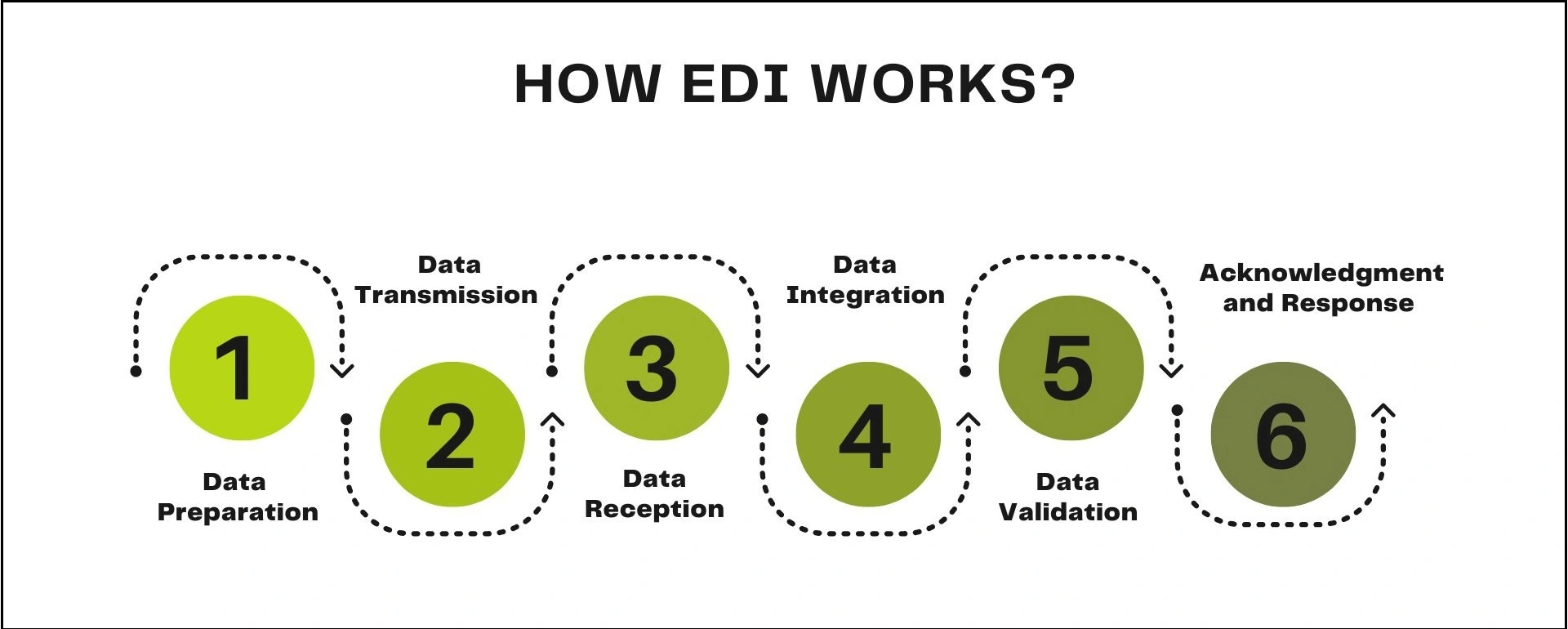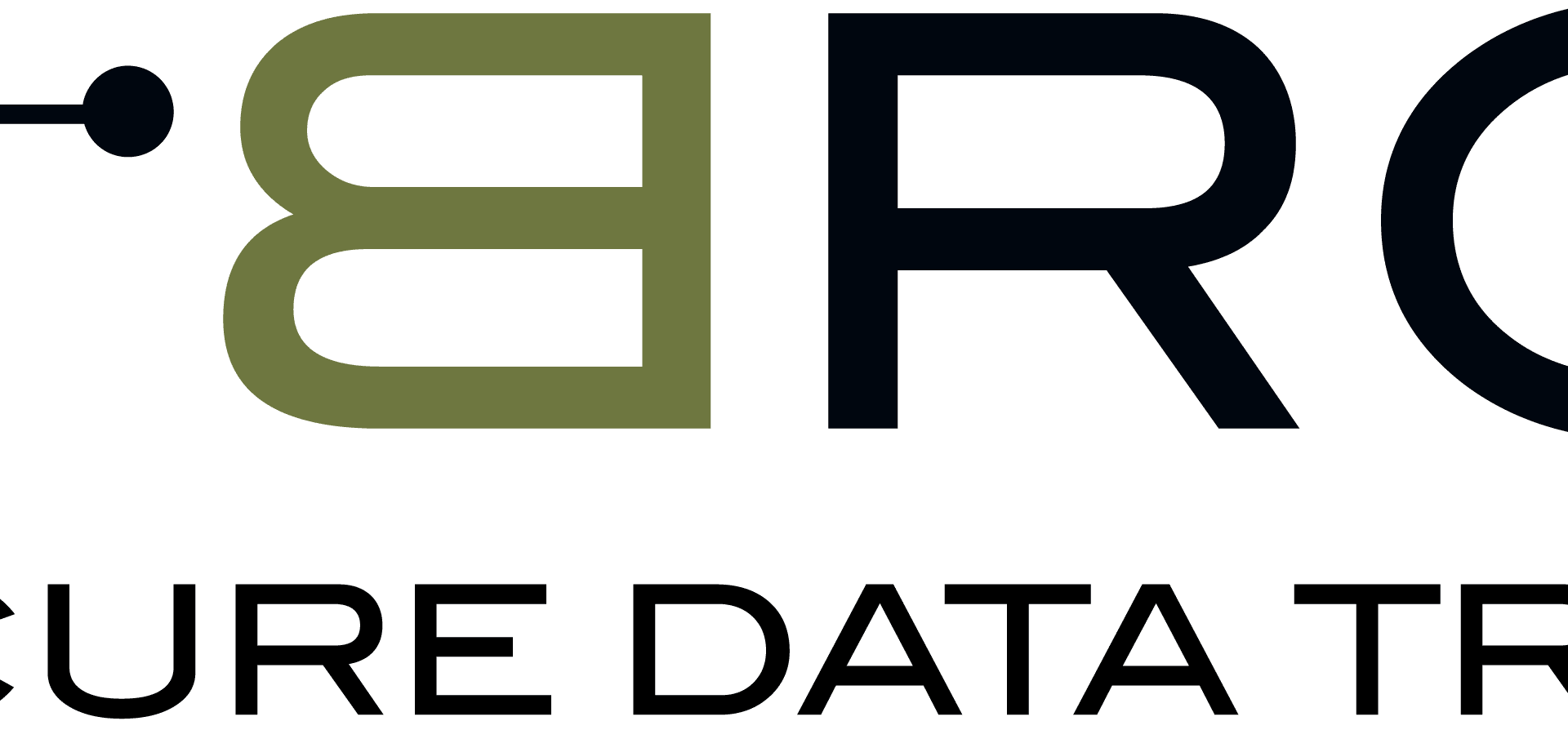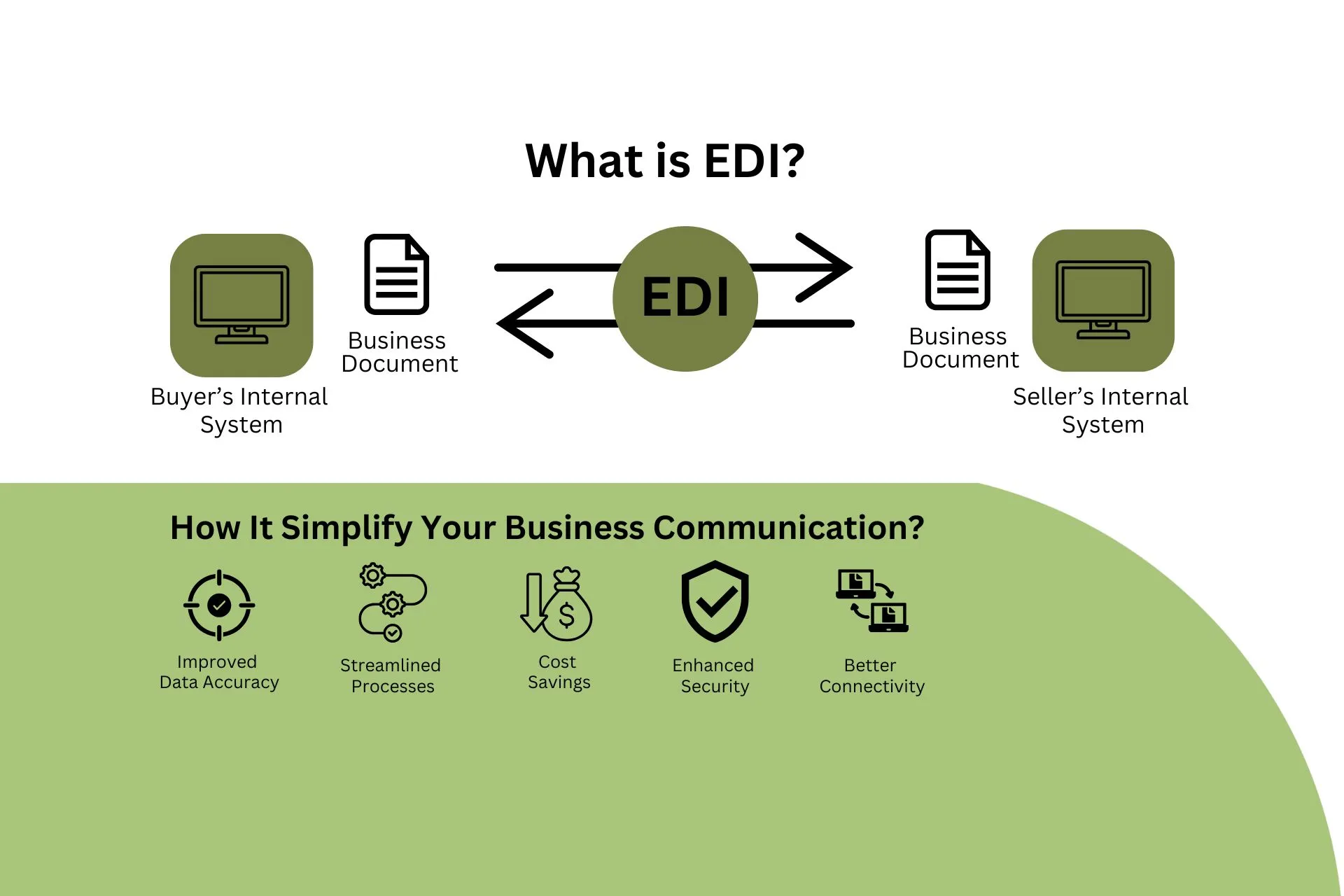What is EDI (Electronic Data Interchange)?
Electronic Data Interchange (EDI) is the automated, computer-to-computer exchange of standardized business documents between organizations, businesses and trading partners.
Instead of using paper or manual processes, EDI allows businesses to send and receive documents like purchase orders, invoices, and shipping notices in a structured, electronic format. This reduces the need for manual data entry, minimizes errors, speeds up transactions, and improves efficiency.
How EDI Works
Electronic Data Interchange (EDI) streamlines the exchange of business information between trading partners through a structured and secure process.

How EDI Works
Electronic Data Interchange (EDI) streamlines the exchange of business information between trading partners through a structured and secure process.
1. Data Preparation
Business documents like purchase orders (EDI 850) and invoices (EDI 810) are converted into EDI messages (data). Relevant data is extracted from internal systems (ERP, CRM, inventory management) or PDF, CSV files etc. and converted into standardized EDI formats such as X12 or EDIFACT.
2. Data Transmission
The EDI documents are securely transmitted using protocols like SFTP, HTTPS, or FTP. HubBroker ensures that all transmissions are encrypted and authenticated, maintaining data integrity and security throughout the process.
3. Data Reception
The recipient’s system receives the EDI message via HubBroker. The platform automatically decodes and converts the message into the required format, ensuring it’s ready for further processing.
4. Data Integration
HubBroker seamlessly integrates the EDI data into the recipient’s business systems, such as ERP (e.g., SAP, NetSuite), inventory management, or accounting platforms. or convert as per the trading partner’s EDI format requirements. The entire process is automated by mapping the EDI data fields to the relevant fields in the recipient’s systems.
5. Data Validation
HubBroker iPaaS platform validate the data whether it is appropriate or not. If not, the relevant notification is sent to rectify the error.
6. Acknowledgment and Response
After successful data integration, the recipient’s system sends an acknowledgment (e.g., EDI 997) to confirm receipt. HubBroker tracks these acknowledgments and promptly notifies the sender.
How Does It Simplify Your Business Communication?
1. Improved Data Accuracy
EDI replaces manual data entry with standardized formats, reducing errors and ensuring precise information exchange.
2. Streamlined Processes
Automating tasks like invoicing and purchase orders accelerates business cycles and minimizes manual intervention, enhancing overall efficiency.
3. Cost Savings
EDI reduces manual effort and processing costs, enabling businesses to allocate resources toward enhancing communication tools and fostering better collaboration with partners.
4. Enhanced Security
With encryption and authentication, EDI ensures secure document exchanges, protecting sensitive business data.
5. Better Connectivity
Cloud-based EDI seamlessly integrates with your business systems, enabling quick, secure data sharing with partners and vendors.
Conclusion:
EDI simplifies B2B communication, improving accuracy and efficiency to help businesses scale effortlessly.
HubBroker has been providing EDI integration services since 2012, supporting renowned brands such as ERIKS, Orkla, ATEA, WEXOE, TROMBORG, PROSHOP, nuuday, and others. Contact us for any EDI solutions to enhance your business communication.





